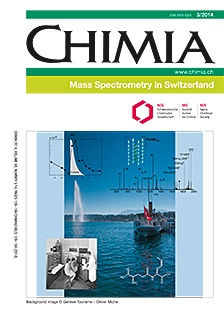50 Years of Mass Spectrometry at Firmenich: A Continuing Love Story
DOI:
https://doi.org/10.2533/chimia.2014.160Keywords:
Direct sampling ms, Flavor, Fragrance, Gc-ms, Lc-msAbstract
Mass spectrometry (MS) has been intensively used in the field of flavor and fragrance since its beginning in the 1950s, and it remains an essential technique for current and future research in this field. After a short historical section on the introduction and development of MS at Firmenich, this work reviews the main applications of MS-based techniques published by Firmenich researchers over the past 5 years. It exemplifies the use of gas chromatography (GC)–MS for the discovery of new odorant – hence volatile – molecules in a broad range of natural products, such as fruits, meats, and vegetables. Non-volatile compounds play a major role in taste attributes and are also possible precursors of odorant molecules. Their identification by liquid chromatography (LC)–MS in the context of malodor generation from sweat is a typical example of such a relationship. With their high selectivity and sensitivity, GC–MS and LC–MS instruments are used in the fields of flavor and fragrance not only for identification, but also as unique tools for the accurate quantitation of compounds in complex matrices. This is particularly important for regulatory analyses such as dosage of potential allergens in perfumes and for the development of delivery systems. Finally, because of the rapid response time of MS, the kinetics of processes such as the release of flavors in the mouth during food consumption can be monitored by direct sampling into the mass spectrometer.Downloads
Published
2014-03-26
How to Cite
[1]
E. Frérot, L. Wünsche, Chimia 2014, 68, 160, DOI: 10.2533/chimia.2014.160.
Issue
Section
Scientific Articles
License
Copyright (c) 2014 Swiss Chemical Society

This work is licensed under a Creative Commons Attribution-NonCommercial 4.0 International License.







